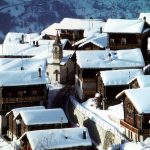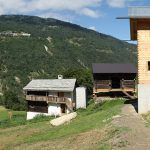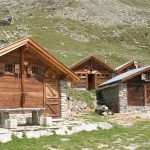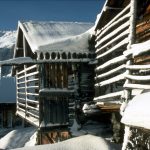Saint-Martin, Canton Wallis, Switzerland
The municipality of St. Martin with it roughly 950 inhabitants is located on 1,400 m altitude, some 15 km southeast of Sion, the capital of the canton Wallis. It comprises nine villages with a surface area of almost 3,700 ha. In particular, 2.3% are dedicated to settlement zones, 43% are covered with forest and 33% are being used for alpine agriculture, namely dairy farming and cheese production. Between 1970 and 1990, the inhabitant count fell by 13%, but could then be stabilized. The 1,300 second residences constitute a special case, 600 of them are being rent out.
In 1988, the development process of St. Martin was in a difficult economic situation, induced by a key event: The rejection of a planned intensive touristic project through a higher authority initiated a rethinking process regarding the development of the municipality, where citizens were integrated in the process and regional cooperation was forged.
In the area of construction, the municipality and initiative individuals try to renew empty buildings falling int disrepair as a primary measure, adhering to the authentic structure. In order to stop uncontrolled settlements, some 30% of the surface that had been declared a development zone before were allocated to other purposes. The second pillar of the development process is the tourism sector, especially agro-tourism and soft tourism.
As a rule, development is brought upon in three linked steps. First stage of implementation is the new construction of a hostel, a new development, the reconstruction of an old cottage and the erection of a agro-tourism centre and indicated, didactic hiking trails. Forestry is controlled by a economic plan, depending on the energy demands of the population. Especially water is used for energy production, the proceeds from the electricity production are an important income source of the municipality.
In cooperation with neigbouring municipalities and the region, the construction of a cross-border nature reserve is being planned. Objective is the creation of a “bio sphere area”, whereby the potential for a future nature reserve is already in use, after pedagogic events have been created. The renewal of the irrigation trenches (Bisses) in the alpine outer areas of the municipality is also remarkable.
Social and cultural life plays an important role. The many sport, music and song clubs and a number of other societies and associations such as the senior citizen club bear witness to that end; the latter is responsible for the design, maintenance and operation of the newly created vineyard. The planned “Generation House” also deserves mentioning; here old and young will live together under one roof. The private initiative for the revival of the traditional knowledge about medicines and herbs of the region is another extraordinary project.
St. Martin stands out due to for its exemplary dealing with the cultural heritage and existing natural resources, the commitment for the maintenance of traditional agriculture and forestry, the promotion of soft tourism and a number of cultural and social activities.





